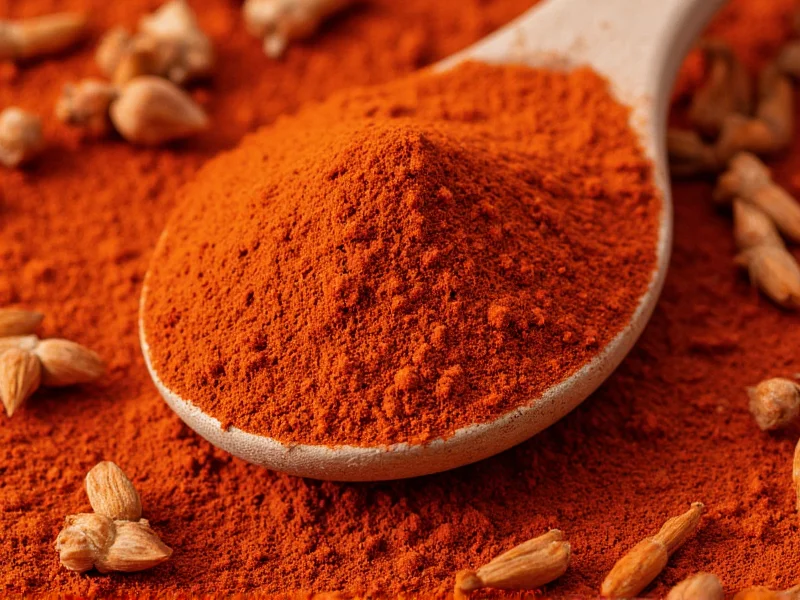Smoked paprika, or pimentón, is a cornerstone spice in Spanish cuisine that adds distinctive smoky depth to dishes like paella, chorizo, and roasted vegetables. When you're out of this specialty ingredient or seeking different flavor profiles, knowing effective substitutes prevents recipe disappointment. This guide explores scientifically sound alternatives that maintain culinary integrity while adapting to your pantry's contents and dietary preferences.
Understanding Smoked Paprika's Unique Profile
Before exploring substitutes, recognize what makes smoked paprika special. Made from peppers smoked over oak fires then ground, it delivers three key elements:
- Smoky dimension (from the smoking process)
- Sweet or spicy notes (depending on pepper variety)
- Earthy richness (distinct from regular paprika)
Effective alternatives must address at least two of these characteristics. Simply using regular paprika misses the crucial smoky component that defines dishes like patatas bravas or smoked paprika aioli.
Top Substitutes Ranked by Culinary Effectiveness
Not all alternatives work equally well across recipes. Your choice should match both the dish type and desired flavor intensity.
| Alternative | Smokiness Level | Best For | Substitution Ratio |
|---|---|---|---|
| Regular paprika + liquid smoke | ★★★★☆ | Paella, stews, marinades | 1 tsp paprika + ⅛ tsp liquid smoke |
| Chipotle powder | ★★★☆☆ | Chili, BBQ rubs, roasted meats | ½ tsp chipotle per 1 tsp smoked paprika |
| Smoked sea salt | ★★☆☆☆ | Finishing dishes, roasted vegetables | ¼ tsp smoked salt per 1 tsp smoked paprika |
| Paprika + cumin blend | ★☆☆☆☆ | Bean dishes, soups | ¾ tsp paprika + ¼ tsp cumin |
Detailed Alternative Analysis
Regular Paprika with Liquid Smoke
This combination most accurately replicates smoked paprika's profile. Use pure liquid smoke sparingly—just 2-3 drops per teaspoon of regular paprika. For authentic Spanish recipes like fideuà, choose sweet Hungarian paprika as your base. Avoid mesquite liquid smoke, which imparts an overly aggressive flavor that overwhelms delicate seafood dishes.
Chipotle Powder for Heat-Forward Dishes
When substituting smoked paprika in chili or mole recipes, chipotle powder provides comparable smokiness with added heat. Reduce the quantity by half since chipotle packs more punch. This alternative works particularly well as a smoked paprika substitute for recipes requiring depth with spice, such as chipotle aioli or smoked paprika chicken rubs. Note that chipotle lacks the subtle sweetness of Spanish pimentón.
Smoked Sea Salt for Subtle Enhancement
For finishing dishes where intense smokiness would dominate, smoked sea salt offers controlled smokiness without altering color. Sprinkle on roasted potatoes or deviled eggs as you would smoked paprika. This approach works best as a smoked paprika alternative for garnishing rather than cooking, preserving the dish's visual presentation while adding complexity.
Regional Spice Blends
Certain global spice mixtures can approximate smoked paprika's profile when used strategically:
- Berber spice blend (adds smokiness with cumin and coriander) - ideal for roasted vegetables
- Adobo seasoning (contains smoked elements) - works in bean dishes
- Smoked black pepper - provides subtle smokiness for delicate sauces
These alternatives function best as smoked paprika substitutes for specific regional cuisines rather than direct replacements.
Choosing the Right Alternative for Your Recipe
Selecting the optimal substitute depends on your specific cooking context. Consider these factors when deciding between smoked paprika alternatives:
Dish Type Matters Most
For traditional Spanish recipes like paella valenciana, maintain authenticity with regular paprika plus a whisper of smoked salt. Mexican dishes like enchilada sauce benefit more from chipotle powder's heat. When making smoked paprika hummus or roasted vegetable blends, a touch of liquid smoke blended with sweet paprika delivers the closest flavor profile.
Heat Sensitivity Considerations
Smoked paprika comes in sweet (dulce), bittersweet (agridulce), and hot (picante) varieties. Match your substitute's heat level accordingly:
- Sweet smoked paprika substitute: Regular paprika + 1-2 drops liquid smoke
- Hot smoked paprika alternative: Chipotle powder at half strength
This distinction proves crucial when seeking the best alternative to smoked paprika for specific recipes where heat balance affects the final dish.
Avoid Common Substitution Mistakes
Cooks often make these errors when replacing smoked paprika:
- Overusing liquid smoke - creates artificial, acrid flavors
- Using regular paprika alone - misses the essential smoky dimension
- Substituting with smoked paprika powder - redundant and incorrect terminology
- Ignoring recipe origin - using chipotle in Spanish dishes creates flavor dissonance
Understanding these pitfalls ensures your smoked paprika alternatives enhance rather than compromise your cooking.
Practical Application Guide
Implement these substitution strategies in real cooking scenarios:
For Paella and Spanish Rice Dishes
Mix 1 teaspoon sweet Hungarian paprika with ⅛ teaspoon smoked sea salt. Add during the sofrito stage for optimal flavor integration. This smoked paprika substitute for paella maintains authenticity while using accessible ingredients.
For Smoked Paprika Chicken or Meat Rubs
Combine equal parts regular paprika, garlic powder, and onion powder with ¼ teaspoon liquid smoke per tablespoon of mixture. The liquid smoke quantity for smoked paprika substitution in dry rubs should stay minimal to prevent bitterness.
For Vegetarian and Vegan Dishes
When making smoked paprika lentil soup or roasted vegetable medleys, use smoked paprika powder alternatives that don't rely on animal products. A blend of smoked salt and sweet paprika works better than bacon-infused options for plant-based cooking.











 浙公网安备
33010002000092号
浙公网安备
33010002000092号 浙B2-20120091-4
浙B2-20120091-4